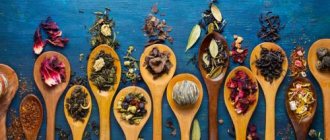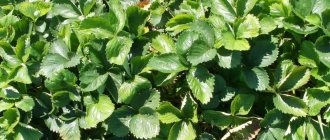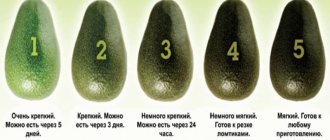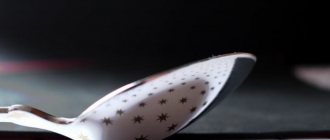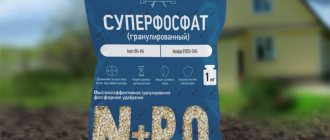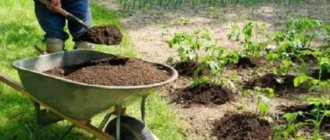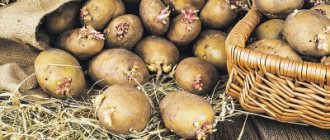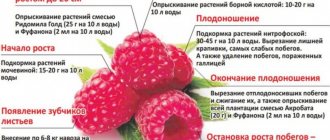how much fertilizer is in a teaspoon...?
| substance | tea spoon | tablespoon | Matchbox | glass 200ml |
| ammonium nitrate | 4 | 17 | 17 | 170 |
| dolomite flour | 8 | 25 | 34 | 340 |
| ash | 2 | 8 | 10 | 100 |
| fluff lime (slaked lime) | 3 | 9 | 12 | 120 |
| lime flour | 8 | 22 | 30 | |
| potassium salt | 5 | 17 | 22 | 220 |
| potassium magnesium (potassium sulfate + manganese) | 5 | 16 | 20 | 200 |
| calcium nitrate | 5 | 15 | 20 | 200 |
| copper sulfate | 5 | 16 | 22 | 220 |
| iron sulfate | 5 | 16 | 22 | 200 |
| urea (carbamide) | 3 | 10 | 13 | 130 |
| sodium nitrate | 6 | 18 | 24 | 240 |
| nitroamophoska | 5 | 14 | 18 | 180 |
| nitrophoska | 5 | 15 | 20 | 200 |
| colloidal sulfur | — | — | 13 | 130 |
| soda ash | — | — | 12 | 130 |
| potassium sulfate (potassium sulfate) | 6 | 20 | 26 | 260 |
| ammonium sulfate | 5 | 12 | 16 | 160 |
| double granulated superphosphate | 5 | 15 | 20 | 200 |
| simple granulated superphosphate | 5 | 17 | 22 | 220 |
| superphosphate powder | 6 | 18 | 24 | 240 |
| phosphorus flour | 9 | 26 | 35 | 350 |
| potassium chloride | 5 | 14 | 18 | 180 |
how much does fertilizer weigh in a 10 liter bucket?
| Name | kg |
| Sod land | 12 |
| Mature compost | 10 |
| Wood ash | 5 |
| Slaked lime (lime - fluff) |
How to calculate the amount of active substance and fertilizer.
Sometimes plant care recommendations indicate the weight of the active substance rather than the fertilizer itself. For example, it is recommended to add 6 grams of nitrogen per square meter. Note, not urea, not ammonium nitrate, but nitrogen.
In such cases, the following formula is applicable. The required amount of active substance (in our example it is 6 g of nitrogen) must be multiplied by 100 and divided by the percentage of nitrogen in the fertilizer. Let's take ammonium nitrate as an example. The percentage of nitrogen in it is 34%. Let's do the calculation:
600g: 34 = 17.65, well, that’s about 18 grams. This means that in order for the earth to receive 6 g of nitrogen per 1 square meter, we need to take 18 grams of ammonium nitrate, and this can easily fit into a salt spoon (table above).
Let’s calculate as an example: per 3 square meters you need to add 8 grams of phosphorus. We have double superphosphate, the percentage of active phosphorus in it is 40%. We count:
800g: 40% = 20g. 20 grams of double superphosphate is a matchbox (table above).
How many grams of fertilizer are in a tablespoon, a teaspoon and a 200 ml glass.
To use a tablespoon, a teaspoon, a regular glass (200 ml) and a matchbox as a measure of weight, you need to understand how much volume can fit in a given container. To do this, gardeners and farmers have compiled a measuring chart of fertilizers. We weighed various fertilizers in different table containers. We came to the conclusion that each fertilizer has its own weight. See the table below.
| Fertilizer | In a tablespoon | In a teaspoon | In a glass (200 ml.) |
| Calcium nitrate | 15 | 5 | 200 |
| inkstone | 16 | 5 | 220 |
| Copper sulfate | 16 | 5 | 220 |
| Potassium magnesium sulfate | 17 | 6 | 200 |
| Nitroammofoska | 14 | 5 | 180 |
| Nitrophoska | 15 | 5 | 200 |
| Peat ash | 6 | 2 | 80 |
| Wood ash | 8 | 2,5 | 100 |
| Slaked lime | 10 | 3 | 120 |
| Limestone flour | 26 | 8 | 340 |
| Dolomite flour | 22 | 8 | 300 |
| Potassium salt | 17 | 5 | 220 |
| Potassium sulfate | 20 | 6 | 260 |
| Potassium chloride | 14 | 5 | 180 |
| Phosphorite flour | 26 | 9 | 340 |
| Phosphorus-containing double | 16 | 5 | 200 |
| Phosphorus-containing granular | 15 | 6 | 220 |
| Powdered superphosphate | 18 | 6 | 240 |
| Ammonium nitrate | 12 | 4 | 170 |
| Ammonium sulfate | 14 | 5 | 188 |
| Urea (urea) | 10 | 3 | 130 |
If you liked our table, then perhaps you will find the food measurement table in spoons useful. There is also a very good liquid measuring table, in which you will learn the types of liquid measures.
How can I replace fertilizer scales?
When preparing fertilizers and solutions, summer residents often begin to come up with different measuring devices, boxes, glasses and buckets.
If you don’t have scales at hand at your dacha, you can always replace them with improvised means. The main thing is to know how much fertilizer a particular container can hold. You can keep this reminder at your dacha. It can be useful to you at any time.
One 10 liter bucket can hold:
— 10 kg of compost or old greenhouse soil; — 5 kg of dry peat; - 12 kg of turf soil; — 15 kg of chicken manure; — 5 kg of wood ash; — 8 kg of humus; — 8 kg of fresh horse manure; — 9 kg of cow manure;
One glass (250 grams) may contain:
— 160-180 grams of ammonium nitrate or ammonium sulfate; — 90-100 grams of wood ash; - 260 grams of potassium sulfate; — 185-215 g of superphosphate; - 185 grams of potassium chloride; — 180-200 grams of fertilizer mixture (vegetable, fruit, etc.);
A matchbox (empty) may contain:
— 12 gr. fluff lime; - 10 gr. ash; - 15 gr. carbamide (urea); — 17 gr. ammonium nitrate; — 17 gr. ammonium sulfate; — 22 gr. sodium nitrate; — 18 gr. potassium nitrate; — 22 gr. superphosphate in granules; — 24 gr. superphosphate powder; - 20 gr. ammophos; - 15 gr. nitroammofoski; - 15 gr. nitrophos; — 18 gr. potassium chloride; — 25 gr. potassium sulfate; - 20 gr. potassium salt; — 25 gr. potassium nitrate; - 20 gr. potassium magnesium; - 20 gr. complex fertilizers; — 34 gr. phosphorus flour;
Water can be measured:
- 1 glass (faceted and thin, with a rim) = 250 cc - 250 g. - 1 glass (faceted, without rim) = 200 cc - 200 g. - 1 tablespoon = 15 cc - 15 g. water; - 1 teaspoon = 5 cc - 5 g. water; - 1 faceted glass (200 gr.) = 13 tablespoons of water; - 1 tablespoon = 3 teaspoons; - 1 teaspoon = 100 drops; Place 0.25-0.5 grams of light powder or 1-2 grams of heavy powder on the tip of the knife.
If you feed small plants or seedlings, use small doses of fertilizer. I will give doses of fertilizers for a tablespoon and a teaspoon. The accuracy is approximately 0.5 grams, and fertilizer should be poured level with the edges, without a slide.
A tablespoon (15 g) may contain:
— 12 gr. ammonium nitrate; - 9 gr. slaked lime; — 23 gr. dolomite flour; — 26 gr. lime flour; — 17 gr. potassium salt; - 10 gr. carbamide (urea); — 14 gr. ammonium sulfate; - 20 gr. potassium sulfate; — 17 gr. superphosphate (granulated); — 15 g superphosphate (double); — 18 gr. superphosphate (simple); — 28 gr. phosphorus flour; — 14 gr. potassium chloride;
A teaspoon (5 g) may include:
- 4 gr. ammonium nitrate; - 3 gr. slaked lime; — 8 gr. dolomite flour; - 9 gr. lime flour; - 5-6 gr. potassium salt; - 3 gr. carbamide (urea); - 5 gr. ammonium sulfate; — 6-7 gr. potassium sulfate; - 5-6 gr. superphosphate (granulated); — 5 g superphosphate (double); - 6 gr. superphosphate (simple); - 6 gr. phosphorus flour; - 5 gr. potassium chloride;
If you use measuring cups and beakers, then use the scale for water or liquid in your calculations.
We measure fertilizers without scales
Maybe I won’t open America with my topic, but since, as I understand, we also have new gardeners, I’ll tell them about gardening “arithmetic.” In any recommendations for the use of fertilizers they write: take 12 grams of fluff lime, 18 grams of potassium chloride, and so on. In general, a pharmacy scale under your arm – and off to the garden! Don't be alarmed, everything can be much simpler. The gardener has his own, and very precise, measurements.
The first of them is a matchbox. It contains:
19 g ammonium sulfate, 17 g ammonium nitrate, 13 g urea, 22 g simple granulated superphosphate, 20 g double superphosphate, 35 g phosphate rock, 19 g potassium chloride, 22 g potassium salt, 26 g potassium sulfate, 34 g dolomite flour, 30 g limestone flour, 12 g slaked lime, 10 g wood ash, 8 g peat ash, 20 g nitrophoska.
One tablespoon is
14 g ammonium sulfate, 12 g ammonium nitrate, 10 g urea, 17 g simple granulated superphosphate, 15 g double superphosphate, 26 g phosphate rock, 14 g potassium chloride, 17 g potassium salt, 20 g potassium sulfate, 25 g dorlomite flour, 22 g limestone flour, 9 g slaked lime, 8 g wood or 6 g peat ash, 15 g nitrophoska.
Interesting on the topic:
Garden beds according to Kurdyumov: how to work less and get excellent...
Mar 3, 2022
Important rules for feeding roses that help me...
Mar 3, 2022
Aren't you tired? Then about a teaspoon
This is 4 g of ammonium nitrate, 3 g of urea, 5 g of nitrophoska, 5 g of simple granulated superphosphate, 5 g of double superphosphate, 5 g of potassium chloride, 5 g of ammonium sulfate, 5 g of potassium salt, 9 g of phosphate rock, 6 g of potassium sulfate , 8 g dolomite 8 g limestone flour, 3 g slaked lime, 2.5 g wood ash, 2 g peat ash.
It happens that more “volumetric” measurement measures are needed, especially when feeding trees
So, one glass (200 ml) is 200 g of nitrophoska and double superphosphate, 186 g of ammonium sulfate, 165 g of ammonium nitrate, 130 g of urea, 220 g of potassium salt, 220 g of simple granulated superphosphate, 350 g of phosphate rock, 190 g of chloride potassium, 260 g of potassium sulfate, 340 g of dolomite flour, 300 g of limestone flour, 120 g of slaked lime, 100 g of wood and 80 g of peat ash. And one standard bucket with a capacity of 10 liters is 8 kg of fresh horse manure, 5 kg of horse manure, but on a bed of sawdust, 9 kg of fresh mullein, 5 kg of dry peat, 5 kg of wood ash, 5 kg of bird droppings, 8 kg of humus, 12 kg of turf soil, 10 kg of old greenhouse or compost soil.
Superphosphate is poorly soluble in water, so superphosphate extract is used.
It is prepared like this:
200 g of superphosphate (double 100 g) is poured into 1 liter of hot water and left for 1-1.5 hours, stirring constantly. Then 0.2 liters of extract are diluted in 10 liters of water. This amount is equivalent to 40 g of dry matter.
How many grams of complex fertilizer “Malyshok” are in a teaspoon? Is it possible to fertilize pumpkin with it?
| 6 | |
| Sawdust horse manure (litter) | 5 |
| Horse dung | 8 |
| Cow dung fresh | 9 |
| Slurry | 12 |
| Dry sawdust | 8 |
| Humus | 8 |
| Bird droppings | 5 |
| garden soil | 12 |
| Dry peat | 5 |
| Fertilizers | Glass, volume 200 ml | Matchbox volume 20 ml | Tablespoon, volume 15 ml | Teaspoon, volume 5 ml |
| Ammonium nitrate | 163 | 17 | 12 | 4 |
| Slaked lime | 120 | 12 | 9 | 3 |
| Dolomite flour | 300 | 30 | 23 | 8 |
| Lime flour | 340 | 34 | 26 | 9 |
| Potassium salt | 220 | 22 | 17 | 5-6 |
| Urea (urea) | 130 | 13 | 10 | 3 |
| Ammonium sulfate | 186 | 19 | 14 | 5 |
| Potassium sulfate | 260 | 26 | 20 | 6-7 |
| Granulated superphosphate | 220 | 22 | 17 | 5-6 |
| Double superphosphate | 200 | 20 | 15 | 5 |
| Simple superphosphate | 240 | 24 | 18 | 6 |
| Phosphorus flour | 350 | 35 | 28 | 6 |
| Potassium chloride | 190 | 19 | 14 | 5 |
| Effect-2 | 204 | 20 | 15 | 5 |
- 1 bucket holds 10 liters or 10 kg of water: - 1 thin glass holds 260 cubic meters. cm or 260 g of water; — 1 faceted glass holds 200 cubic meters. cm or 200 g of water; - 1 tablespoon holds 25 cu. cm or 25 g of water; - 1 teaspoon holds 5 cu. cm or 5 g of water;
Place 0.25-0.5 g of light powder or 1-2 g of heavy powder on the tip of a penknife.
One faceted glass contains (grams):
- Ammonium nitrate, ammonium sulfate - 160-180 - Superphosphate - 185-215 - Phosphorus flour - 310-360 Potassium chloride - 185-190 - Potassium sulfate - 260 - Wood ash - 90-120 - Fertilizer mixture (fruit and berry, vegetable etc.) - 180-200
In one matchbox (capacity 20 cc)
- ammonium nitrate - 17 - ammonium sulfate - 17 - urea - 15 - calcium nitrate - 18 - nitride nitrate - 22 - powdered superphosphate - 24 - granulated superphosphate - 22 - phosphate rock - 34 - potassium chloride - 16 - potassium salt - 20 - potassium sulfate - 25 - potassium nitrate - contains minerals - fertilizer mixture (fruit, vegetable) - 20 g - wood ash - 10 - fluff lime 12 g
One bucket (capacity 10 liters) contains kilograms:
- horse manure (fresh) - 8 - horse manure on a bed of sawdust - 5 - cow manure (fresh) -9 - bird droppings -5 - humus -8 - wood ash -5 - dry peat -5 - turf soil -5 - old greenhouse or compost soil -10
Inna, thank you very much, otherwise once you start reading the instructions, all your enthusiasm ends!
As a rule, recipes contain grams, milligrams, liters, half liters, and so on. But if with liters everything is more or less clear, then with grams everything is confusing. It is often written: take 20 grams of urea, add 10 grams of ash, but don’t take the scales with you to the garden... It turns out that you can use familiar things that are always at hand - a matchbox, a spoon and even a glass. Remember, now it will be very easy to calculate the fertilizer rate.
Matchbox. It contains:
- 19 g ammonium sulfate, 17 g ammonium nitrate, 13 g urea;
- 22 g of simple granular superphosphate, 20 g of double superphosphate;
- 35 g of phosphate rock, 19 g of potassium chloride, 22 g of potassium salt;
- 26 g potassium sulfate, 34 g dolomite flour, 30 g limestone flour;
- 12 g of slaked lime, 10 g of wood ash, 8 g of peat ash and 20 g of nitrophoska.
In one tablespoon:
- 14 g ammonium sulfate, 12 g ammonium nitrate, 10 g urea;
- 17 g of simple granulated superphosphate, 15 g of double superphosphate;
- 26 g of phosphate rock, 14 g of potassium chloride, 17 g of potassium salt;
- 20 g potassium sulfate, 25 g dorlomite flour, 22 g limestone flour;
- 9 g of slaked lime, 8 g of wood or 6 g of peat ash and 15 g of nitrophoska.
A teaspoon is:
- 4 g ammonium nitrate, 3 g urea, 5 g nitrophoska;
- 5 g of simple granular superphosphate, 5 g of double superphosphate;
- 5 g potassium chloride, 5 g ammonium sulfate, 5 g potassium salt, 9 g phosphate rock;
- 6 g potassium sulfate, 8 g dolomite, 8 g limestone flour;
- 3 g slaked lime, 2.5 g wood ash, 2 g peat ash.
If you need to measure something larger, take 200 ml. cup. It includes:
- 200 g of nitrophoska and double superphosphate, 186 g of ammonium sulfate;
- 165 g ammonium nitrate, 130 g urea, 220 g potassium salt;
- 220 g of simple granulated superphosphate, 350 g of phosphate rock;
- 190 g potassium chloride, 260 g potassium sulfate, 340 g dolomite flour;
- 300 g limestone flour, 120 g slaked lime, 100 g wood and 80 g peat ash.
The volume is even larger, take a standard bucket with a capacity of 10 liters, you can put in it:
- 8 kg of fresh manure, 5 kg of horse manure, but on a bed of sawdust;
- 9 kg of fresh mullein, 5 kg of dry peat, 5 kg of wood ash, 5 kg of bird droppings;
- 8 kg of humus, 12 kg of turf soil, 10 kg of old greenhouse or compost soil.
media.dacha
Photos from open sources
Read ndsmi.by on social networks: VKontakte, Odnoklassniki, Facebook, instagram, twitter, Telegram
How much fertilizer can fit in a tablespoon?
The correct dosage of protective equipment or fertilizer is the key to obtaining healthy fruits.
The method for determining the required amount of nutrients depends not only on the container that was chosen, but also on the condition of these products:
- liquid;
- granular;
- free-flowing.
The instructions for use indicate a clear dosage in grams. This complicates the process due to the lack of garden scales.
An approximate measurement of bulk or granular fertilizer is not an option, since deviation from the norms leads to a deterioration in the condition of the plant.
An overdose of essential microelements is clearly visible. This is a change in color, shape of the leaf blade or fruit. But there are hidden signs that the gardener becomes aware of after harvesting.
A table where you can find out how many grams of a particular substance are in a matchbox, tablespoons and tea spoons will help in using available means.
These household containers are considered the most popular for using preparations and compounds for the garden.
| Name of substance | tablespoon/g | Name of substance | Bucket/kg |
| Ash (wood, limestone, dolomite, peat) | 8/25/22/8 | Ash | 5 |
| Slaked lime | 9 | Land (compost or greenhouse) | 10 |
| Potassium chloride | 14 | Sod land | 12 |
| Potassium salt | 17 | Humus | 8 |
| Potassium sulfate | 20 | Litter (bird, cow, horse) | 5/9/8 |
| Nitrophoska | 15 | Slurry | 12 |
| Superphosphate (double/granular/simple) | 15/15/18 | Horse manure on sawdust bed | 5 |
| Urea | 10 | ||
| Ammonium nitrate | 12 | ||
| Ammonium sulfate | 14 |
It is clear that organic fertilizers such as manure or slurry are not measured with spoons. They require a bucket.
How to measure 1 g of dry fertilizer
Ay, what a topic! I won't pass by.
The problem raised by Tatyana is truly pressing. Electronic kitchen scales do not show tenths of grams; between adjacent values of 1 and 2 grams the difference in weight is 100%.
A couple more ways to measure small amounts of dry fertilizer.
Volumetric weighing
With all the variety of thimbles, the average volume of a thimble has remained unchanged for centuries - about 2 milliliters:
Measuring the volume of a thimble
If you have some kind of non-standard thimble, then:
- place an empty cup on the kitchen scale
- set to zero
- pour 10 thimbles into a cup
- Divide the scale reading by 10 to get the volume of the thimble (1 milliliter of water = 1 gram of water).
If you don’t have scales on your household, fill a 100 or 500 gram jar with your thimble. And divide the volume by the number of thimble portions used. This will give you the volume of a non-standard thimble.
Or use a used syringe to draw in the water that fits into the thimble - the divisions on the syringe will show how much volume it contains.
Theoretical rationale for volumetric weighing
It is necessary to make a reservation that not every fertilizer has an equality of 1 milliliter of volume to one gram of weight. Therefore, Tatyana indicated fertilizers for which this equality is observed.
Fertilizers often have a lower density than water. But for violets, some lack of fertilizer is not critical, especially taking into account the recommendations for violets to dilute standard fertilizers by half. Therefore, volumetric measurement of fertilizers is quite appropriate in caring for violets, even if the density of the fertilizer is unknown.
After using the thimble, be sure to rinse it, fertilizer dust may not be the best reagent for your finger.
Pirate way to determine small quantities
Place the contents of the fertilizer bag on a piece of paper. The weight is written on the bag. By eye, move some of the fertilizer to the side so that in a large pile there remains fertilizer to one of the powers of two (2, 4, 8, 16, 32, 64, ... grams).
Divide the large pile in half. Divide each half in half again. Divide the quarters in half too. Eights are also halved. At some point you will end up with many, many small piles of fertilizer, each containing about 1 gram. Pack each pile in a small paper bag and use as needed for the health of your violets.
Using the same method, you can measure, for example, 1/8 of a gram from 1 gram of potent fertilizers.
Option. If you have a large bag of fertilizer and a kitchen scale, you can measure, for example, 16 grams and package it as suggested.
Historical excursion
In countries where there were many pirates at one time, there is still a running joke:
Question: How many pirates can there be on a pirate ship?
Answer: 2, 4, 8, 16, 32, 64, 128,... Otherwise, you will have to shoot the extra ones during a fair division of the spoils.
Jokes aside, the pirates were great at dividing their booty into any equal number of parts, and everyone considered the division fair.
For this there was a special way of sharing, which was called pirate. In its simplest form (2 pirates), one pirate divides the booty as he sees fit into 2 equal parts. And the other chooses the part that seems larger to him. Questions about fairness do not arise for either side.
For a larger number of people, division follows a similar scheme in several stages - first large groups of pirates divide the loot, then within the group the pirates are split into small groups and continue to divide small groups among themselves, and so on until the entire large pile of loot is divided between many pairs of pirates. Considering that the pirate life was short, everyone was in plain sight, and during the capture of ships, pirates often saved each other’s lives, they often trusted their fellow pirates, who were better familiar with the value of the loot in the colonial markets, to divide/choose their share.
In English-speaking countries, the medieval “pirate” is still one of the most favorite masquerade images for children:
Measuring small amounts of liquid fertilizer
I will add that you can also conveniently measure liquid fertilizers from bottles with a syringe.
And with a pipette you can measure out a very small amount of fertilizer. Don't know how much one drop from your pipette weighs?
- place an empty cup on the kitchen scale
- set to zero
- pour 100 drops into a cup
- Divide the scale reading by 100 to get the volume of the droplet (1 milliliter of water = 1 gram of water).
Similarly, you can measure how much a droplet weighs from a jar of Corvalol and use it as a container for storing liquid fertilizer.
The sizes of droplets from different pipettes and different jars strongly depend on their parameters, so it is better not to use the data obtained for one pipette or jar for others.
Reference table “Weight of fertilizers and soils in a 10-liter bucket”
| Name | Weight, kg |
| Ready compost | 10 |
| Humus | 8 |
| Ash | 5 |
| Dry peat | 5 |
| Horse manure on a bed of sawdust | 5 |
| Fresh horse manure | 8 |
| Sod land | 12 |
| 12-13 | |
| Slaked lime | 6-7 |
| Fresh cow dung | 9 |
| Slurry | 12 |
| Dry sawdust | 8-10 |
| Bird droppings | 5 |
We wish you success and good harvests!
If there are no scales at the dacha, any preparations and bulk substances can be measured in various containers, for example, soil and organic fertilizers in buckets, water and drops and glasses; it is also useful to know how many grams of fertilizer a matchbox, glass or spoon can hold.
